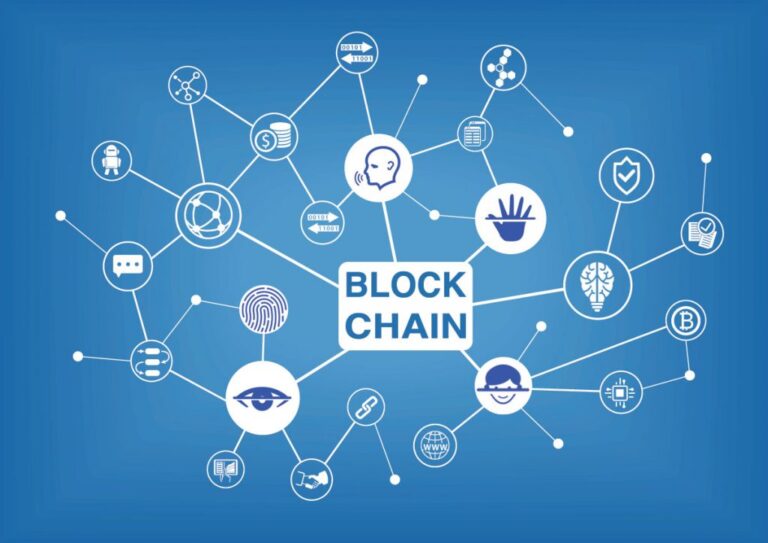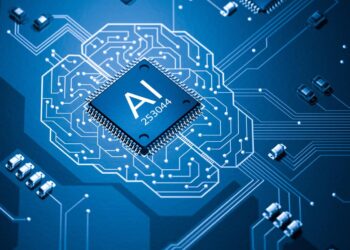The concept of blockchain has transcended its origins as the backbone of cryptocurrencies like Bitcoin to emerge as a foundational technology poised to secure everything in our increasingly digital world. More than just a distributed ledger, it represents a profound shift towards a trustless, transparent, and immutable system of record-keeping and transaction verification, enabling unprecedented levels of security and efficiency across diverse sectors. In an age where data breaches are rampant and centralized systems are constantly vulnerable, blockchain offers a revolutionary paradigm for establishing verifiable trust without relying on traditional intermediaries. This comprehensive exploration delves into the core principles that define blockchain, its transformative potential across industries, the significant challenges it must overcome for widespread adoption, and its essential role in shaping a future where data integrity and transactional security are paramount. Understanding this paradigm-shifting innovation is crucial for anyone navigating the intricate tapestry of 21st-century technology and digital trust.
The Core Principles of Trust

At its heart, blockchain is a distributed database that maintains a continuously growing list of ordered records, called blocks. These blocks are linked together using cryptography, forming a chain. What makes it revolutionary isn’t just decentralization, but the inherent mechanisms that foster trust and security.
A. Decentralization
Unlike traditional centralized databases controlled by a single entity (like a bank or a corporation), a blockchain is decentralized.
- Distributed Network: Copies of the entire ledger are maintained and updated by multiple independent participants (nodes) across a network.
- No Central Authority: There’s no single server or entity that controls the data or the network. This removes a single point of failure and makes the system highly resilient to attacks or censorship.
- Peer-to-Peer: Transactions occur directly between participants, rather than through an intermediary.
This distributed nature inherently increases security and resilience, as taking down one node doesn’t compromise the entire network.
B. Immutability
One of blockchain’s most powerful features is the immutability of its records.
- Cryptographic Hashing: Each block contains a cryptographic hash of the previous block. A hash is a unique, fixed-size string of characters generated from data. Any tiny change in the data of a previous block would drastically alter its hash.
- Chain Linkage: Because each block’s hash is embedded in the next block, any attempt to tamper with a past transaction would change the hash of that block, making it inconsistent with the subsequent blocks in the chain.
- Tamper-Proof: This cryptographic linkage makes it nearly impossible to alter historical data without invalidating the entire chain, creating an unchangeable and verifiable record. This is why blockchain is often called an “immutable ledger.”
C. Transparency (Pseudo-Anonymity)
While transactions on many blockchains are publicly visible, the identities of the participants are often pseudo-anonymous.
- Public Ledger: Every transaction ever recorded on the blockchain is visible to all participants on the network. This provides unparalleled transparency regarding the history of transactions.
- Cryptographic Addresses: Users are identified by alphanumeric wallet addresses, rather than their real names. This offers a degree of privacy, or “pseudo-anonymity,” where activity is public but linked to an address, not a real person.
- Auditability: The transparent and immutable nature of the ledger makes it highly auditable, reducing the need for traditional auditors in some contexts.
D. Consensus Mechanisms
For a decentralized network to function, all participants must agree on the validity of transactions and the state of the ledger. This is achieved through consensus mechanisms.
- Proof-of-Work (PoW): (e.g., Bitcoin, pre-Merge Ethereum) Miners compete to solve complex cryptographic puzzles. The first to solve it gets to add the next block to the chain and is rewarded. This process is energy-intensive but highly secure.
- Proof-of-Stake (PoS): (e.g., Ethereum post-Merge) Validators are chosen to create new blocks based on the amount of cryptocurrency they “stake” (lock up) as collateral. This is more energy-efficient and scalable.
- Delegated Proof-of-Stake (DPoS), Practical Byzantine Fault Tolerance (PBFT), etc.: Various other consensus mechanisms are designed for different balances of security, scalability, and decentralization.
These mechanisms ensure that all participants agree on a single, valid version of the truth without needing to trust any single party.
E. Smart Contracts
Smart contracts are self-executing agreements stored and run directly on a blockchain.
- Code as Law: The terms of the agreement are directly written into lines of code, which automatically execute when predefined conditions are met.
- Automation: They automate complex processes without the need for intermediaries (e.g., automatically releasing payment when goods are delivered, based on IoT sensor data).
- Trustless Execution: Once deployed, smart contracts run exactly as programmed, eliminating the need for trust between parties or reliance on third parties to enforce terms.
- Applications: Powering decentralized applications (dApps), DeFi protocols, NFTs, and supply chain automation.
Smart contracts are a cornerstone of many modern blockchain applications, enabling a new era of programmatic trust.
The Core Technologies Powering Blockchain Innovation
Beyond its foundational principles, the functionality and widespread adoption of blockchain rely on a range of interconnected technologies and architectural designs.
A. Cryptography
Cryptography is the mathematical backbone that secures every aspect of a blockchain.
- Hashing Algorithms: (e.g., SHA-256 for Bitcoin) Generate unique digital fingerprints for blocks and transactions, ensuring their integrity and immutability.
- Public-Key Cryptography (Asymmetric Cryptography): Used for digital signatures, allowing users to cryptographically sign transactions with their private key, which can then be verified by anyone using their public key. This establishes ownership and authenticity.
- Zero-Knowledge Proofs (ZKPs): Advanced cryptographic techniques that allow one party to prove that a statement is true without revealing any information beyond the validity of the statement itself. Crucial for enhancing privacy and scalability on public blockchains.
B. Distributed Ledger Technology (DLT)
Blockchain is a type of DLT, but DLT encompasses a broader range of decentralized record-keeping systems.
- Shared and Synchronized: All participants in a DLT network have access to a shared, synchronized ledger.
- Beyond Blockchain: Some DLTs may not use a chained block structure (e.g., Directed Acyclic Graphs – DAGs used by IOTA), but still share the principles of decentralization and immutability.
C. Network Architecture
Blockchains can be implemented with different access and permission levels.
- Public Blockchains (Permissionless): Anyone can join the network, participate in consensus, and read/write transactions (e.g., Bitcoin, Ethereum). They offer maximum decentralization but can face scalability challenges.
- Private Blockchains (Permissioned): Operated by a single organization or entity, which controls who can participate. They offer high transaction speed and privacy but are more centralized (e.g., Hyperledger Fabric for enterprise).
- Consortium Blockchains: Managed by a group of organizations, where specific members are granted permission to participate in consensus (e.g., for supply chain consortia). Offers a balance between decentralization and control.
- Hybrid Blockchains: Combine elements of public and private blockchains, perhaps with public verification of certain data and private execution of others.
D. Interoperability Solutions
As multiple blockchains emerge, the need for them to communicate and transfer assets/data becomes critical.
- Cross-Chain Bridges: Protocols that allow assets and information to be transferred between different blockchains (e.g., Wrapped Bitcoin on Ethereum).
- Layer 2 Solutions: Technologies built on top of existing blockchains (like Ethereum) to improve scalability and reduce transaction fees (e.g., rollups like Arbitrum, Optimism, ZK-rollups) by processing transactions off-chain and then settling them on the main chain.
- Polkadot/Cosmos: Projects specifically designed to enable interoperability between different blockchains.
E. Decentralized Applications (dApps) and Web3
Blockchain powers a new generation of applications.
- dApps: Applications built on decentralized networks, typically using smart contracts, that operate without central intermediaries.
- Web3: The vision of a decentralized internet where users own their data and digital assets, powered by blockchain and other decentralized technologies.
Blockchain’s Transformative Impact Across Industries

Blockchain’s unique properties—immutability, transparency, decentralization, and security—are revolutionizing processes and creating new paradigms across a vast array of sectors.
A. Finance and Banking
Blockchain is fundamentally reshaping the financial landscape, aiming for a more transparent, efficient, and inclusive system.
- Cryptocurrencies: Enabling peer-to-peer digital cash, bypassing traditional banking systems.
- Decentralized Finance (DeFi): A rapidly growing ecosystem of financial applications built on blockchains (primarily Ethereum), offering services like lending, borrowing, trading, and insurance without traditional intermediaries.
- Cross-Border Payments: Facilitating faster, cheaper, and more transparent international money transfers compared to traditional SWIFT systems.
- Trade Finance: Streamlining complex trade finance processes, reducing fraud and delays through shared, immutable ledgers.
- Asset Tokenization: Representing real-world assets (e.g., real estate, art, commodities) as digital tokens on a blockchain, enabling fractional ownership, increased liquidity, and easier transfer.
- Know Your Customer (KYC) and Anti-Money Laundering (AML): Blockchain can streamline identity verification and transaction tracing for regulatory compliance.
B. Supply Chain Management
Blockchain offers an unprecedented level of transparency and integrity in global supply chains.
- Product Traceability: Tracking goods from origin to consumer, verifying authenticity, and preventing counterfeits (e.g., for luxury goods, pharmaceuticals, food).
- Enhanced Visibility: All participants in a supply chain can access a shared, immutable record of product movements, quality checks, and ownership changes.
- Fraud Reduction: Makes it harder to introduce fake products or tamper with records.
- Automated Payments: Smart contracts can automatically trigger payments upon delivery or verification of goods, streamlining logistics and reducing delays.
- Sustainability Tracking: Verifying ethical sourcing, fair labor practices, or environmental certifications.
C. Healthcare and Pharmaceuticals
Blockchain promises to enhance security, interoperability, and patient control over health data.
- Secure Patient Records: Creating immutable, tamper-proof records of medical history, prescriptions, and treatments, accessible only with patient consent.
- Drug Traceability: Preventing counterfeit drugs by tracking pharmaceutical products through the supply chain.
- Clinical Trials: Enhancing the integrity and transparency of clinical trial data, ensuring results are accurate and untampered.
- Personalized Medicine: Securely sharing genomic and health data among researchers and providers for precision treatments.
- Remote Patient Monitoring: Securely recording and sharing data from wearables and IoT medical devices.
D. Identity Management
Blockchain can give individuals greater control over their digital identities.
- Decentralized Identifiers (DIDs): Unique, cryptographically verifiable identifiers that users control, independent of any central authority.
- Verifiable Credentials (VCs): Digital versions of traditional credentials (e.g., driver’s license, university degree) that can be issued by trusted entities and stored/presented by the user without revealing underlying personal data unnecessarily.
- Enhanced Privacy: Users only reveal the necessary minimum information when proving an attribute (e.g., proving you are over 18 without revealing your birth date).
- Reduced Fraud: Makes identity theft and impersonation more difficult through cryptographic verification.
E. Voting and Governance
Blockchain offers potential solutions for more transparent and secure voting systems.
- Transparent Voting: All votes are recorded on an immutable public ledger, ensuring they are counted accurately and not tampered with.
- Enhanced Security: Reducing the risk of fraud, hacking, or unauthorized changes to ballots.
- Increased Participation: Making voting more accessible, potentially from anywhere with an internet connection.
- Decentralized Autonomous Organizations (DAOs): Blockchain-based organizations governed by code and community consensus, enabling new forms of collective decision-making.
The Challenges for Widespread Blockchain Adoption
Despite its revolutionary potential, blockchain technology faces significant hurdles that must be addressed for it to achieve mainstream, global adoption.
A. Scalability
Many public blockchains struggle with the number of transactions they can process per second.
- Low Throughput: Compared to traditional centralized systems (e.g., Visa processes thousands of transactions per second), major blockchains like Bitcoin and Ethereum (pre-Merge) process far fewer, leading to congestion.
- High Transaction Fees (Gas Fees): Network congestion can drive up transaction costs, making micro-transactions impractical.
- Solutions Under Development: Layer 2 scaling solutions (e.g., rollups like Optimism, Arbitrum, ZK-rollups, Lightning Network) and alternative Layer 1 blockchains are actively being developed to increase transaction capacity.
B. Regulatory Uncertainty and Compliance
The decentralized, borderless nature of blockchain technology creates challenges for traditional regulatory frameworks.
- Legal Status: The legal classification of cryptocurrencies, NFTs, security tokens, and DAOs varies widely across jurisdictions and is often unclear.
- Consumer Protection: Regulators are concerned about protecting consumers from fraud, market manipulation, and the inherent volatility of crypto assets.
- AML/KYC Compliance: Balancing the need for privacy and pseudo-anonymity with regulatory requirements to prevent illicit activities (money laundering, terrorist financing).
- Taxation: Determining how to tax crypto assets, transactions, and decentralized finance activities is complex and evolving.
- International Harmonization: The lack of global, unified regulations hinders cross-border blockchain adoption.
C. Security and Vulnerabilities
While the blockchain itself is cryptographically secure, the broader ecosystem has vulnerabilities.
- Smart Contract Bugs: Flaws in the code of smart contracts can lead to massive losses (e.g., DAO hack, countless DeFi exploits).
- Private Key Management: Users are solely responsible for securing their private keys; loss or theft means permanent loss of assets.
- Exchange and Wallet Hacks: Centralized cryptocurrency exchanges and vulnerable online wallets are prime targets for cyberattacks.
- Bridge Exploits: Cross-chain bridges, which allow assets to move between different blockchains, have been frequent targets for hackers.
- 51% Attacks: A theoretical risk where a single entity gains control of over 50% of a blockchain’s mining or staking power, allowing them to manipulate transactions. This is less likely on large, established blockchains but a concern for smaller ones.
D. User Experience (UX) and Accessibility
Blockchain applications are often complex and intimidating for the average user.
- Steep Learning Curve: Concepts like crypto wallets, seed phrases, gas fees, and smart contracts are unfamiliar to most.
- Lack of Intuition: Current interfaces often lack the simplicity and polish of traditional Web2 applications.
- Onboarding Process: The process of setting up wallets, acquiring cryptocurrency, and interacting with dApps can be cumbersome.
- Irreversibility of Transactions: Unlike traditional banking, blockchain transactions are generally irreversible, meaning errors can be costly.
E. Energy Consumption (for PoW chains)
Proof-of-Work blockchains like Bitcoin consume significant amounts of energy.
- Environmental Concerns: The high energy consumption has drawn criticism for its carbon footprint.
- Shift to PoS: The move by Ethereum to Proof-of-Stake drastically reduces energy consumption, and many new blockchains are designed with PoS or similar energy-efficient mechanisms.
The Future of Blockchain
Despite these challenges, the trajectory for blockchain technology is one of increasing maturity, integration, and specialized application, aiming to become an invisible yet essential layer of our digital infrastructure.
A. Enterprise and Industry-Specific Adoption
Beyond public cryptocurrencies, permissioned and consortium blockchains are gaining traction in enterprises.
- Supply Chain Solutions: Major companies are already implementing blockchain for enhanced traceability and transparency.
- Digital Currencies: Central banks are exploring Central Bank Digital Currencies (CBDCs), which may leverage DLT for efficiency and security.
- Tokenization of Real-World Assets: Increasing adoption of tokenized securities, real estate, and other assets for fractional ownership and liquidity.
- Decentralized Identifiers for Businesses: Streamlining business verification and B2B transactions.
B. Layer 2 Scaling and Interoperability Solutions
These will make blockchains more practical for everyday use.
- Rollups Dominance: ZK-rollups and Optimistic rollups will become the primary way to scale public blockchains, significantly increasing transaction throughput and reducing fees.
- Cross-Chain Communication Protocols: More robust and secure protocols for seamless interaction between different blockchains, moving beyond risky bridge models.
- Abstracting Complexity: Wallets and dApps will become more user-friendly, abstracting away the underlying blockchain complexities from the end-user.
C. Web3 and the Metaverse Ecosystem
Blockchain is a core enabler for the next generation of the internet.
- True Digital Ownership: NFTs will continue to define ownership of digital assets in the metaverse and beyond.
- Creator Economies: Empowering artists, musicians, and content creators with new monetization models and direct fan engagement.
- Decentralized Social Media: Blockchain-powered platforms will offer censorship resistance and user control over data.
- Gaming: Play-to-earn models and true ownership of in-game assets will continue to grow.
D. Quantum-Resistant Cryptography
Preparing for the future threat of quantum computers.
- Post-Quantum Cryptography (PQC): Development and standardization of new cryptographic algorithms resistant to quantum attacks to secure blockchain networks in the long term.
E. Regulatory Clarity and Responsible Innovation
Governments will establish clearer rules, fostering legitimate innovation.
- Global Regulatory Sandboxes: Creating controlled environments for testing blockchain applications under regulatory guidance.
- Risk-Based Regulation: Tailoring regulations based on the specific risks posed by different blockchain applications (e.g., DeFi vs. stablecoins).
- Focus on Consumer Protection: Increased efforts to protect users from fraud and educate them about risks.
- Ethical AI and Blockchain: Ensuring that the integration of AI with blockchain is done ethically, addressing issues of bias and transparency.
Conclusion
Blockchain Secures Everything is a vision for a digitally trust-enabled future. By fundamentally altering how we verify transactions, store records, and manage identities, this revolutionary technology promises unprecedented levels of transparency, immutability, and resilience against centralized points of failure and malicious actors. While the journey towards widespread adoption is marked by significant hurdles—from scalability and regulatory ambiguity to user experience and security exploits—the inherent benefits of a decentralized, cryptographically secured ledger are too compelling to ignore. As innovation continues to address these challenges and as the technology integrates more deeply with AI, IoT, and the burgeoning Web3 ecosystem, blockchain will increasingly become an invisible, yet indispensable, foundation for digital trust and integrity. Our ability to build a truly secure, equitable, and efficient digital future hinges on our collective commitment to understanding, developing, and responsibly deploying the transformative power of the blockchain. The revolution of verifiable trust is not just imminent; it’s already here, reshaping our digital destiny.









